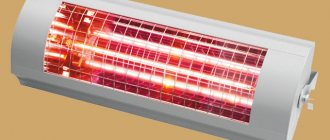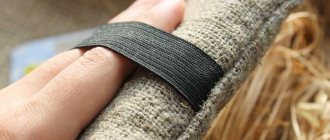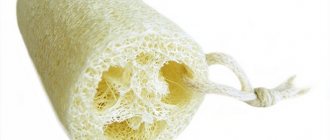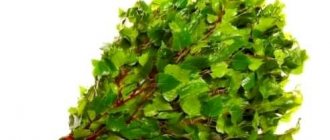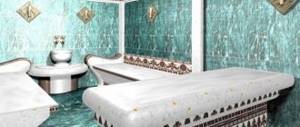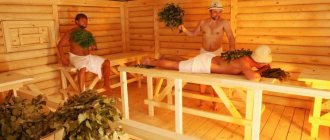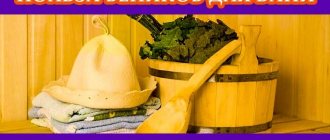Body hygiene is one of the most important factors of health. Hot water, soap and a washcloth will help keep your skin clean. But if there are no particular difficulties with water and soap, then users choose simpler washcloths in order to change accessories without regret.
According to the rules, you need to change your washcloth every 4-6 weeks if the item is made of artificial materials. Natural products can be changed every 4-5 months.
And this is understandable; natural materials are much easier to disinfect and wash. Manufacturers offer a wide range of natural washcloths; let’s look at the most popular types of products.
Sisal
The natural material is fiber from the leaves of the agave plant. Sisal is mined in Brazil and Mexico. Ropes are woven from coarse, densely twisted fiber, and thin threads are used to make washcloths.
The popular bookmaker has released a mobile application for Android, you can follow the link absolutely free.
Sisal accessories are the toughest washcloths, so you need to choose them wisely. In order not to rip off the delicate skin, it is better to use coarse washcloths. The face is not washed with sisal washcloths; the skin of the heels and feet needs rough cleaning. The accessory will remove steamed corns and calluses well.
Expert opinion
Evgenia Katyshkina
Household and farm management specialist
Sisal washcloths should be regularly treated with antimicrobial compounds and dried well. With proper use, it is suitable for use for six months.
So different and necessary
Humanity has been using washcloths for thousands of years. And if the remains, in which a bath sponge is guessed, are not found during archaeological excavations, then this is only because until the 20th century, natural materials were used to make bath accessories, which do not withstand long service and are not preserved in the natural environment. But during this time, bathing habits have been enriched with washcloths made from a variety of materials, and their styles and shapes number in the dozens.
Based on shape and style, the following types of washcloths can be distinguished:
- flat;
- tubular;
- ball, colloquially “bun” or “monkey fist”;
- glove, mitten or mitten;
- three-dimensional shape (brick, heart, pillow, donut, as long as it is comfortable for the hand);
- fine mesh net;
- sponge, also known as a sponge and a bunch and a soft lump close to it (dried bast and herbs), as well as a loofah (loofah gourd);
- a separate category is a soap-washcloth made of felt or wool.
According to the structure, washcloths can be dense and hollow inside, shaggy and hard, with or without handles. They are knitted, woven, twisted, grown or extracted from the natural environment. The variety of washcloths is explained by the variety of bathing procedures and the individual needs of bathers. So many people, so many ideas. How to choose a washcloth for the body is up to everyone to decide for themselves.
Jute
Jute fiber is well known to land owners; durable bags are made from the fibers. Fine threads make excellent washcloths. In terms of rigidity, jute accessories are slightly inferior to sisal ones, but they also clean the body of dirt well. You can use jute washcloths to wash your entire body, not just rough areas of the skin. Usage period is up to 5 months.
To soften a new jute sponge, soak it in boiling water for at least 6 hours. Some housewives pre-soak the product in water with boric acid - this way the jute fiber becomes not only soft, but also safe for allergy sufferers.
Crochet washcloth, interesting ideas from the Internet
Tutorial on knitting washcloths with elongated loops
The washcloth is crocheted No. 2; it took half a skein of thread.
Crochet flat washcloth
This washcloth is crocheted from propylene thread in 2 folds, with crochet number 5. It is knitted equally on both sides, with a “Fringe” pattern or elongated loops.
Washcloth - crocheted mitten
A washcloth-mitten, just like a regular washcloth, is knitted simply: 1 row of single crochets, 1 row of elongated loops.
Master class on crocheting a striped washcloth
Materials: – polypropylene threads of different colors; – crochet hook (select the size depending on the desired density of the washcloth - the smaller the number, the denser the product will be, and vice versa).
Flat washcloth crocheted from “Housewife - needlewoman” yarn
Author Irina Kachukova. For knitting you will need: yarn “Housewife - a needlewoman for the soul and soul” 50g, 100% polyamide, package 10x50g and a hook.
The knitting pattern is very simple:
- 3 rows of single crochets
- 3 rows of lush columns
How to knit lush columns, see the diagram below in the article.
Hedgehog-shaped washcloth
You will need: polypropylene threads of 2 colors. hook No. 3 or No. 4, needle with a wide eye. The size of the finished washcloth is 14*21 cm.
Crocheted washcloth, crocheted with lush columns:
Your washcloth can be of absolutely any shape and color (depending on the interior of the bathroom). This washcloth is knitted easily and quickly, looks great, and massages simply amazing.
You need to start knitting a washcloth from the handle: a chain of air loops of the required length, which you tie with single crochets, make a connecting stitch with the beginning of the chain, and start knitting the washcloth itself in a circle with single crochets, adding 3 to 5 stitches in each row. In this way, knit to the width of the washcloth you need, then go to the main pattern (lush column), knit 45-50 cm and finish in the opposite direction with a handle. That's it, the washcloth is ready!
Technique for knitting a lush stitch: yarn over, insert the hook into the base loop, grab the working thread and pull out a loop of arbitrary length (repeat 3-5 times). The greater the number of broaches, the more magnificent the column will be. Yarn over and pull the working thread through all the loops on the hook in one go. Make 1 air loop to secure the fluffy column. Skip one base loop and knit another 1 puff stitch into the next one.
Crochet pattern for a baby washcloth:
Loofah
The loofah looks like a hollow “zucchini” with a fibrous “skin”. And, by the way, the plant is classified as a pumpkin species; loofah is grown in Africa. Among the variety of loofahs, there are varieties from which washcloths and water filters are made, and there are also types suitable for consumption.
Some gardeners grow loofahs in their plots, but ready-made loofahs are also inexpensive. The accessory lasts until it wears out. When wet, the washcloth is soft and convenient for washing the entire body, including delicate skin. The natural properties of the loofah will be appreciated by all beauties - a washcloth will replace the most expensive and effective scrub. Small particles of fiber do a good job of cleaning off the top rough layer of skin, washing off the body without any residue.
Eco-friendly, inexpensive and safe dishwashing sponges
When the loofah sponge becomes unsuitable for use in the bathroom, it should be cut into washers and used for washing dishes.
How to choose sponges and washcloths for the kitchen
Kitchen sponges are perhaps the most necessary item. They are used for washing dishes, wiping work surfaces, and for general cleaning of the room. When choosing little “helpers” you need to take into account several important factors:
- Material. Foam sponges save detergent (literally one drop is enough to form abundant foam). They need to be changed at least once a week. Microfiber cloths absorb grease and dirt well and wash quickly. Cellulose sponges are the safest from a hygiene point of view (they harden when dry, which prevents the growth of microbes).
- Size and shape. Small sponges are not always convenient for washing dishes. The most practical is the medium size, which fits comfortably in the hand. Rectangular sponges are universal, while round sponges are more suitable for washing pots and large jars.
- Additional options. For stubborn stains (for example, burnt fat), you may need a metal sponge. Melamine sponges perfectly clean any surface without the use of detergents. Sponges for delicate materials are made of foam rubber and wrapped in thin plastic.
When choosing sponges and washcloths, do not forget about the aesthetic side of the issue. You should not purchase accessories or non-standard shapes. It is not always convenient to use them. As always, look for convenient and practical solutions at the Westwing shopping club.
Lyko
Only thin and soft parts of young linden bark are suitable for weaving washcloths. Sometimes the top layer of bark is removed from other deciduous trees, but linden has special properties - it cleans pores well and deeply, disinfects the skin, and helps heal wounds.
When heated, bast sponges release phytoncides that kill microbes and pathogenic microflora. The disadvantage of bast is low foaming. In addition, particles of material quickly clog the drain hole, which is why washcloths are most often used in bathhouses.
After washing, the washcloth should be dried thoroughly and soaked in boiling water once a week to eliminate germs. The period of use is no more than 2 months, the washcloth will quickly become worn out.
Hard washcloths
Hard washcloths are designed for deep cleansing of the skin. They remove any dirt and have a massage effect. Women use it for peeling and fighting cellulite. It is not recommended to use hard washcloths more than 1-2 times a week.
Kokubo Gachi-Men Body Towel – for men
A long and narrow towel measuring 110 by 20 cm. The ribbed surface provides a massage effect, cleanses any dirt well, even after sports, and absorbs sweat.
Creates abundant foam, thin, easy to form into a lump. When unfolded, it is convenient to wash your back. The structure of the fibers creates a massage effect and stimulates blood supply to the epidermis.
Pros:
- lightweight, does not take up much space;
- dries quickly;
- massages the skin;
- cleans well;
- creates a lot of foam from any detergent.
Minuses:
- not hard;
- thin, not everyone can use it conveniently.
Zeitun kese – for peeling
The washcloth mitten has a rigid structure. Designed for cleansing, peeling, massage. Removes dead skin, sebaceous plugs, opens pores.
Effectively eliminates cellulite - warms up, speeds up metabolic processes. Polishes, makes the skin smooth and soft. Soap foams well and can be used after cleansing and steaming the body.
Pros:
- does not injure;
- massages;
- creates lush foam;
- durable;
- fits comfortably on the hand;
- can be used for peeling.
Minuses:
- Do not rub delicate skin with moles or papillomas;
- expensive.
Ramie
This is a crop that is grown for technical needs. Chinese nettle or ramie fiber is extremely durable and can withstand changes in temperature and humidity. There is no need to dry such an accessory, but rinsing it with peroxide from time to time won’t hurt. The hardness of the washcloth is average, the accessory lasts for about 4 months.
To soak a ramie fiber washcloth, soak the product in boiling water for 3 hours. If there is any doubt about the purity of the material, add half a glass of baking soda to boiling water. After soaking, rinse the washcloth under running clean water.
Linen washcloth
Washcloths made of linen fabric are considered the most gentle for our skin; a cushion washcloth, which is filled inside with medicinal herbs, will be especially useful. True, it will last very little, because the herbs quickly lose their properties, and it needs to be thoroughly dried regularly. A simple linen washcloth glove will be a more practical option for care.
_cosmetics
Birch bark
Natural washcloths, which are used very rarely today. Birch bark is a moisture-resistant material of high strength. Birch bark has antiseptic properties, so such washcloths should definitely be in a house where there are small children, people with allergies, and elderly family members.
Initially, the washcloth will be hard; over time, the fiber will soften, but it will not lose its ability to clean pores well.
Natural bristles
Pig bristles or horsehair are popular materials for making washcloths. Products made from horsehair are more expensive, but short bristles last longer and clean rough areas of the skin better.
There are two types of brushes:
- the bristles are sewn onto the base, letting the ends out, you get a regular brush with a handle;
- Horse hair is woven into ropes, which are then tied into a washcloth in the form of a cloth, mittens, etc.
Both types of products cope well with cellulite and fluid stagnation in the muscles. Natural hair and stubble are not afraid of abrasives, so they can be used together with scrubs and anti-cellulite creams, during dry massage.
What natural products can replace washing powder?
Soft washcloths
Soft washcloths are often chosen by children or people with sensitive skin. When used correctly, they effectively remove dirt, have a light massage effect, and whip up foam well. But such washcloths do not clean well, so they are not suitable for everyone.
Kelebek Kese mitten – soft
Kese is a glove used in Turkish baths for body massage and exfoliation. Apply to steamed skin; no need to apply gel or soap. Made from silk and cellulose fibers. This is the best washcloth for thin and sensitive skin and facial cleansing.
Rolls off dead skin cells, removes impurities, opens pores. This massage improves blood circulation. Cosmetics applied after it are more effective. The washcloth is made in the form of a mitten with a loop. After use it must be dried.
Pros:
- high-quality material that does not cause allergies;
- soft, suitable for the face;
- inexpensive.
Minuses:
- slips off the hand;
- does not exfoliate the skin well.
Sung Bo Cleamy Corn Shower Towel – in the form of a towel
This towel measures 28 by 110 cm. Made from nylon threads. The washcloth scrubs the skin well, but does not injure it, as it is soft.
The size allows you to wash all parts of the body and conveniently rub your back. Thanks to the rough surface, it improves blood circulation, makes the skin smooth, and cleanses. Helps to relax and relieve muscle tension. The washcloth can be used daily.
Pros:
- big;
- convenient to use;
- creates a lot of foam;
- strong and durable;
- soft, suitable for sensitive skin;
- has a massage effect.
Minuses:
- difficult to adjust to size;
- the edge is not processed.
Natural sea sponge
Sea sponge is the only natural material that lasts an incredibly long time. When dry, the sponge can be hard, but in water it instantly softens, foams well and does not cause allergies.
It is permissible to use a sponge to wash delicate areas of the skin, face, and bathe babies. The material gently cleanses pores, iodine components and active biological substances promote wound healing, help cure inflammation, and relieve peeling.
Washcloths made from sea sponge are characterized by a high degree of softness, so they are not suitable as a natural scrub, and it is better not to use the product with abrasive compounds, so as not to clog the pores of the sponge.
Advantages and disadvantages of washcloths made from natural materials
Durable and practical washcloths made of jute and sisal can be knitted with your own hands. A bale of fiber costs about 500 rubles; if you make washcloths the length of 2 adult’s palms, you will get at least 200 pieces from one bay. The weaving process is easy to master even for a preschooler. One bay can provide your entire family with washcloths for 10 years.
And more about the benefits of natural sponges:
- Do not cause allergies. An exception concerns the sea sponge - iodine, which is part of the animal, can provoke a negative reaction.
- Ecological cleanliness. After the end of use, the materials decompose into safe components.
- Lets air through.
- Can be used as a natural scrub.
- When heated, they do not emit harmful substances.
- They serve for a long time.
Minuses:
- natural materials take a long time to dry;
- in comparison with artificial materials, natural ones are much tougher;
- period of use is no more than 6 months (excluding natural sea sponge).
Some natural washcloths are more expensive than artificial ones, but the cost is compensated by the absence of harmful emissions and the environmental friendliness of the products. In addition, the natural material will help cope with inflammation, areas of peeling and remove calluses and corns without the use of special products.
Sponge for body. Types and material. Advantages and disadvantages. Peculiarities
A body washcloth is a versatile personal hygiene cleaning tool. It acts as a scrubber and massager. Various synthetic and natural materials are used to make washcloths. For most people, the parameters of a washcloth are not critical, but having certain skin characteristics, you need to take its choice seriously.
Synthetic sponges
They are the most common, as they are cheap and sold in any supermarket. Their popularity is due not only to their low cost, but also to other advantages:
- Gives thick foam.
- They have a long service life.
- They are less susceptible to the growth of bacteria in their cavity because they do not retain moisture.
Washcloths made of synthetic materials are good in all respects, but are not suitable for people with allergies, as they can cause skin irritation. It is especially advisable to limit their use in a hot bath or sauna. When synthetic material comes into contact with hot skin, irritation can occur even in a person who has not previously suffered from allergies.
Most often, the following are used to make synthetic washcloths:
- Foam rubber.
- Polyethylene.
- Nylon.
Foam sponge
Foam rubber is a porous material, due to which it forms a lot of thick foam when soaping or applying shower gel. It is soft, so it cannot remove strong stains, for example, drops of dried paint. Foam rubber is the best option for healthy, delicate skin.
The disadvantages of foam sponges include:
- Need frequent replacement.
- They tear quickly.
- They lose their shape.
- The brighter the color, the higher the likelihood of an allergy to them.
The high porosity of the material slows down its drying. In this regard, the foam rubber quickly turns sour. With daily use, it is recommended to change foam sponges after a month, or even more often, especially if the air in the bathroom is humid and it does not have time to dry. A signal for replacement is the appearance of an unpleasant odor from the washcloth, indicating the proliferation of a large number of microorganisms in it.
For prevention, you can disinfect the washcloth in the microwave. It is soaked in clean water and heated for 2 minutes at maximum power. After cooling, the washcloth is wrung out and can be used further until it loses its shape or begins to tear.
Polyethylene sponges
Polyethylene is a more rigid material. It scrapes off complex stains well. The material is great for rough skin. If foam pads have a rectangular, round or oval shape, then the range of polyethylene ones is many times wider.
Polyethylene sponges are:
- Long with handles for washing the back.
- In the form of pillows.
- Roses.
The long washcloth with handles is highly rigid. It is used to wash your back without outside help. Usually used as an additional one. It is not suitable for more delicate areas of the body, as it scratches the skin.
Rose sponges are used as basic ones. They are a lump of polyethylene mesh tied with lace. These washcloths are moderately hard. When using them, a lot of foam is also formed. At the same time, when rinsing, they are washed out well. The rose dries quickly. If it is made with high quality, it can easily be used for even six months. Since polyethylene does not absorb moisture, bacteria multiply less intensively on its surface, and there are no small pores in the mesh where water can linger. In general, the main disadvantage of rosettes is that most of them become untied as they are used. The folds of the mesh are pulled out of the knot of the cord, and the rose falls apart.
Nylon sponges
Loofah towels are made from nylon. They are made of nylon thread. It can have different hardness. In general, such a product has only one drawback - its large size, which complicates its drying and storage.
Advantages:
- Can be used to wash any part of the body.
- Practically do not tear.
- You can reach your back with a towel.
Natural washcloths
A washcloth made from natural materials is preferable for the skin, especially if it is prone to irritation. This product is more expensive and has a shorter lifespan than washcloths made of synthetic materials.
By choosing a natural washcloth, on the one hand, you can get a safe tool for body hygiene; on the other hand, it has many disadvantages:
- Needs careful drying.
- Prone to rotting.
- Costs more than synthetic washcloths.
- Has a short service life.
- Actively populated by bacteria.
Many natural washcloths are practically disposable. Considering their cost, using them is completely unprofitable in comparison with synthetic products. The range of natural washcloths is more diverse, so you can easily choose a decent option for your specific skin type.
Manufacturers usually offer washcloths made from the following materials:
- Linen.
- Loofah.
- Sisal.
- Lyko.
- Rami.
- Birch bark.
Linen
Linen washcloth is in demand because it has moderate hardness. Due to this, it does not scratch the skin, but still gives a massage effect and stimulates blood circulation. Finding linen washcloth on sale is not so easy.
Has the following advantages:
- Gives high foaming.
- Dries relatively quickly.
- Absorbs water well.
- Suitable for allergy sufferers.
Using a linen washcloth you can remove the old epithelium. It is suitable for a bath. It can be used when swimming in very hot water without the risk of skin irritation.
From loofah
These are hard sponges that literally grow on a tree. Luffa is a vine from the gourd family. Its fruit turns into a loofah as it ripens. It is cut, processed, dried and used for body hygiene. It is difficult to imagine a more natural washcloth, since its fibers do not even need to be separated and intertwined, like linen ones.
Loofah washcloths have a number of advantages:
- Due to their rigidity, they have an anti-cellulite effect.
- Deeply cleanse the skin.
- Allows you to wash away impurities ingrained into the skin.
- Accelerate the process of epithelial regeneration.
- They keep their shape and do not tear for a long time.
Despite their naturalness and other advantages, loofah sponges are not in great demand due to their high rigidity. Before use, they need to be soaked in hot water for 10-15 minutes. This creates unnecessary additional worries. The cost of such a product is quite high. If you have a greenhouse, you can purchase loofah seeds and grow loofahs yourself. In addition, young loofah fruits are edible before they turn into fibers.
Made from sisal
This is a loofah made from agave fibers. It has the same advantages as linen products. However, it has higher rigidity. The product is a knitted fabric made of brown straw color cord. In general, we can call sisal washcloths expensive and useless, since due to their high rigidity they are rarely used, only in exceptional cases when it is necessary to scrape out dried-on dirt. Dermatologists do not recommend using these washcloths for people with a large number of moles on their body.
In general, in addition to rigidity, sisal washcloths have other disadvantages:
- They produce little foam, which increases the waste of soap or shower gel.
- They need to be pre-soaked in warm water.
- They are expensive.
From the bast
A loofah highly praised by dermatologists, it is made from linden fibers extracted from under the bark. It is truly the most skin-friendly of all natural materials.
Lyko has important advantages:
- Cleanses the skin well.
- Has medium hardness.
- It becomes softer as it soaks.
- It is relatively inexpensive.
A bast washcloth can be used in a bathhouse. It has a pleasant woody smell. The product requires care. It must be dried well after use, since soaked wood fibers begin to rot when kept in moisture. The only really significant drawback of a bast washcloth is that it falls apart. The fibers break off and pieces remain on the body.
From ramie
These are washcloths made from nettle fibers. They are moderately tough and have good resistance to rotting. The product looks quite colorful, so it also serves as decoration, for example, for a bathhouse or sauna. Usually, ramie twine weaving is hemmed onto some natural fabric on the reverse side. This prevents it from losing shape or coming undone.
The material has only advantages:
- Does not scratch the skin.
- It is durable.
- It's inexpensive.
- It can be used for six months or more.
From birch bark
It is a lump of shavings. It is obtained by cutting birch bark into strips. When soaked, it becomes moderately hard. This is an extremely rare item on sale, and also has a high cost.
A birch bark washcloth not only washes the skin, but also brings benefits:
- Is an antiseptic.
- Provides prevention of rashes and acne.
- Relieves inflammation on the skin.
- Helps eliminate orange peel on the skin.
As it is used, the beneficial substances from birch bark are washed out, and its medicinal qualities end. When using this washcloth, it is recommended to use natural soap, otherwise it will not provide any benefit. Birch bark absorbs odors and takes a relatively long time to dry, so the service life of the washcloth is short. When used in a bathhouse, if you dry it near the stove, it will last 2-3 times longer than when simply stored in the bathroom.
Related topics:
- Dish sponge. Types and forms. Replacement timing and features
- Window cleaning devices. Types and application. Operation and features




